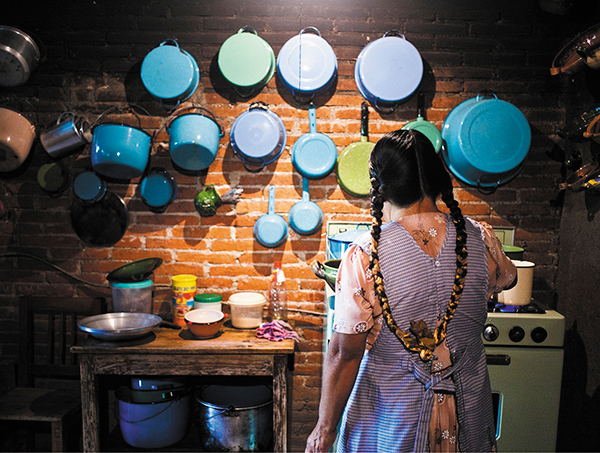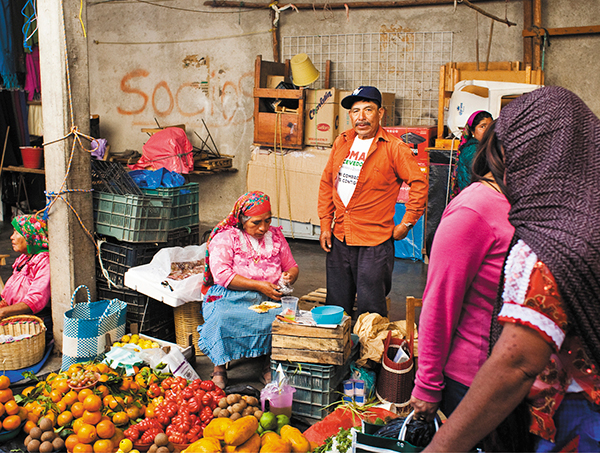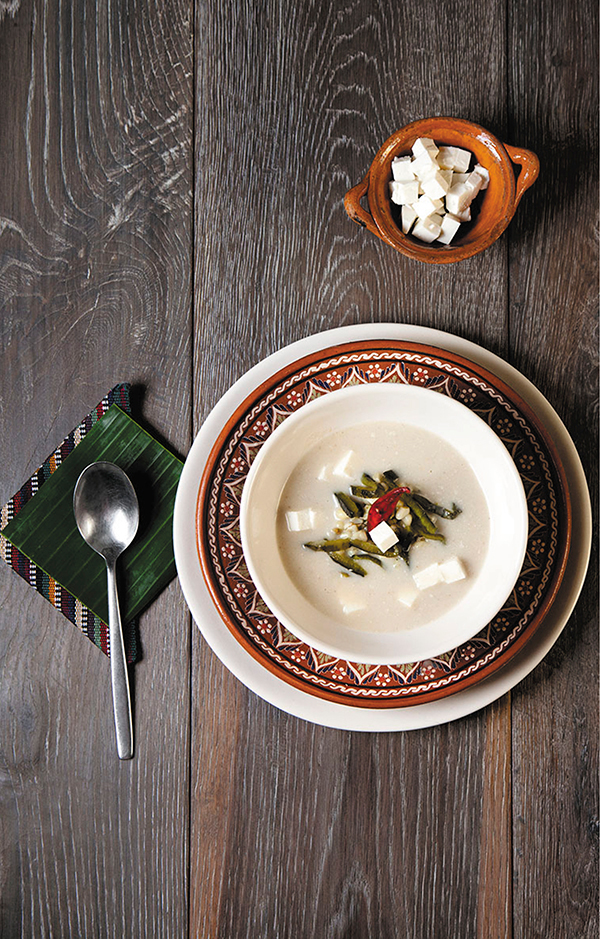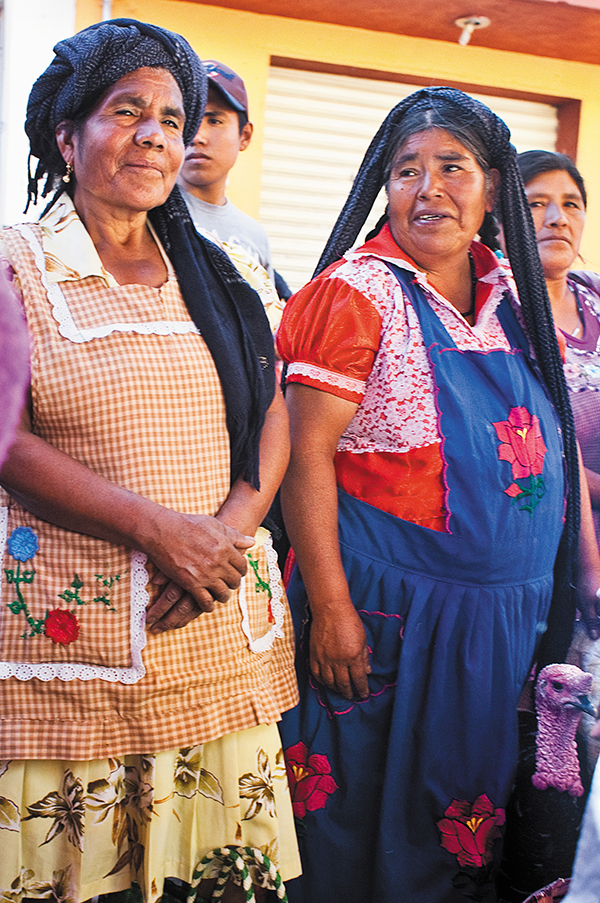
Think you know about Mexican food? Think again!
On Taco Tuesday, the 5 ways chef Margarita Carrillo Arronte is redefining Mexican food for foodies worldwide
"Mexican food is labyrinthine," writes Mexican chef Margarita Carrillo Arronte in the introduction to Mexico The Cookbook. "Dishes like tacos, tamales, and moles fork off in many different directions, in endless variations." Fortunately, Margarita Carrillo Arronte is ideally placed to lead away from any culinary dead ends, to true enlightenment.
The Financial Times describes Margarita as "a cheerleader for her country’s explosive diversity"; Vogue calls her the Julia Child of Mexican cuisine; the New York Times reaches out to the chef, Phaidon author and restaurateur, when explaining Mexico’s René-Redzepi-approved rise to the top table of international gastronomy.
Margarita has dedicated her adult life to recording, refinement and promotion of her country’s cookery around the world. Serving as a working chef, TV host and popular author, she has also served as Vice-President of the Mexican Conservatory of Gastronomical Culture, and lectured about Mexican food at schools including The Culinary Institute of America and Le Cordon Bleu. To mark Taco Tuesday in the US, which you can read more about here, please read on to discover how, in five steps, Margarita has shaken off Mexican cuisine's cheese-and-nachos image, and brought an authentic, vibrant, style of national cookery to us all.

Step 1: Politics In 2012, when the Mexican government took its turn to host the G-20 summit, it included among its national delegation, not only the president, foreign secretary and finance minister, but also cultural representatives, including chef Margarita.
Bringing a cook to an intergovernmental meeting might seem perverse, but the Mexican delegation recognised how Margarita’s respect for indigenous traditions and tenacious promotion of gastronomic culture worked in its favour. In gender politics, too Margarita is no less forthright. Although Mexico is often regarded as a staunchly masculine society, Margarita is adamant that its food has almost exclusively been a female achievement. It was the women, she writes in the introduction to our new book, who ground and processed the tortilla flour, and women who continue to keep the old ways alive.
“Traditionally, for centuries in Mexico, food has been a woman’s thing,” she told the New York Times. “Now men go to school to learn Mexican food, but the truth is that the handling of the masa [dough] has always been a woman’s task.” Something René Redzepi will doubtless bear in mind, when drawing influence from the country.

Step 2: Craft Soaking corn in an alkaline solution prior to grinding it might sound like the kind of chemical treatment popular with the likes of Ferran Adrià. Yet, as Margarita makes clear in Mexico The Cookbook, this ‘nixtamalisation’ of corn kernels is just one indigenous craft - alongside traditional, mixed crop ‘milpa’ farming, to the harvesting of ‘nopales’ or cactus paddles - that has helped keep Mexican food vibrant. The practice of treating corn with limestone or ashes to bring out the crop’s nutritional and gastronomic qualities predates Moteczoma and co. Archaeological records indicate that nixtamalisation of corn dates was going on in Mexico at around 1500 BC. However, in recent years the industrialisation of the process has degraded Mexican flat breads. “As a result, there is a big difference in the quality of tortillas available today,” she writes in our new book, Mexico, “but many people still favour the taste of those made from freshly ground nixtamalised corn, and are versatile enough to be used in everything from tacos to tostadas.”

Step 3: Regionality " Mexican food cannot be separated from its context of geography, people and history," says Margarita. From the border with the United States, Mexico begins in tracts of arid desert silhouetted with giant cacti at dusk – where wheat almost reigns over corn as the major grain and where beef and goat loom large on the menu.
"Crossing the Tropic of Cancer and heading south to Guatemala," she says, "it becomes green, tropical and abundant with produce, with indigenous ingredients that date back to the early people of Mesoamerica – a cuisine that was already rich and developed and of which I am very proud. The food of the north may not be the riot of ingredients and flavors found in the south, but specialties such as beef goat and cheese make it unique. Monterrey in the state of Nuevo Leon specializes in roasted kid, while the state of Chihuaghua has cheese-making tradition dating back to the Mennonites who migrated from Holland in the 19th century.

Step 4: Refinement In the South, the Yucatan Peninsula has unique food thanks to the Mayan people whose history stretches back to ancient Mesoamerica, but who also have a strong presence in the states of the peninsula today. Yucatan was isolated from the center for a long period of time and thus has a unique cuisine that was heavily influenced by the European ships that stopped by for fresh water. Turkey and Venison are two popular indigenous meats – see Turkey with Black Stuffing and Venison Dzik. Yucatan is also known for a method of cooking meat in a pit. A large fire is lit above a hole lined with stones. Once the fire has died down to coals, marinated meat is wrapped in banana leaves and buried under a layer of earth. The famous dish is cochineal pail: cochinita means suckling pig, while pibil means buried. Modern recipes us the same marinade for smaller cuts of meat. Two key ingredients are of the marinade are annatto seeds, which color the meat red, and the sour juice of Seville oranges. (Check out Margarita’s Slow Cooked Pork recipe in Mexico The Cookbook).

Step 5: Heritage Mexican food is my country’s heritage and it is an element of identity and of social cohesion. This differentiation and regionalization arose from pre-Hispanic times, while at the same time a culinary variety gained impetus form the intense trade thriving along the length and breadth of Mesoamerica and beyond its borders. The traditional cuisine of each region of the country is not just the ingredients, preparation methods and utensils,” says Margarita “it is the rich legacy of its history and cultural identity. The wealth of indigenous roots, the product of cultural fusion and racial integration and the influence of other countries have all contributed to create a cuisine that today distinguishes each region.
With over 700 authentic recipes, Mexico The Cookbook is the definitive bible of Mexican home cooking. From tamales, fajitas, and moles to cactus salad, blue crab soup, and melon seed juice, the recipes can be easily recreated at home and present a celebration of the fresh flavours and ingredients from a country whose cuisine is revered around the world.
If you're hungry for more you can find out who, on Taco Tuesday, is serving up great Mexican food in the US today, here. And, for a richer understanding Margarita's life, work and recipes, buy a copy of Mexico The Cookbook here.
Finally, to celebrate Mexico The Cookbook's publication, Live Aqua Cancun and Aeromexico are offering one lucky Cardholder and their guest a luxury trip to Mexico, including flights, transfers and all inclusive, 5* accommodation. For more details on this great Waterstones card holders competition head here.